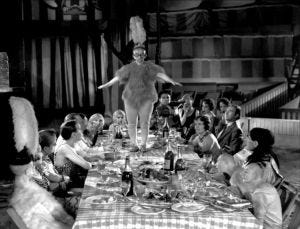Freaks | Horny on Main
Closing your eyes to the cruelty of life is, in my opinion, both stupid and sinful. There’s very little we can do about it. So we have to at least acknowledge it.
—Amos Oz, The King of Norway (2011)
There is no shortage of ugliness in the world. If man closed his eyes to it, there would be even more.
—Forugh Farrokhzad, The House Is B…
Keep reading with a 7-day free trial
Subscribe to Cinema Year Zero to keep reading this post and get 7 days of free access to the full post archives.





